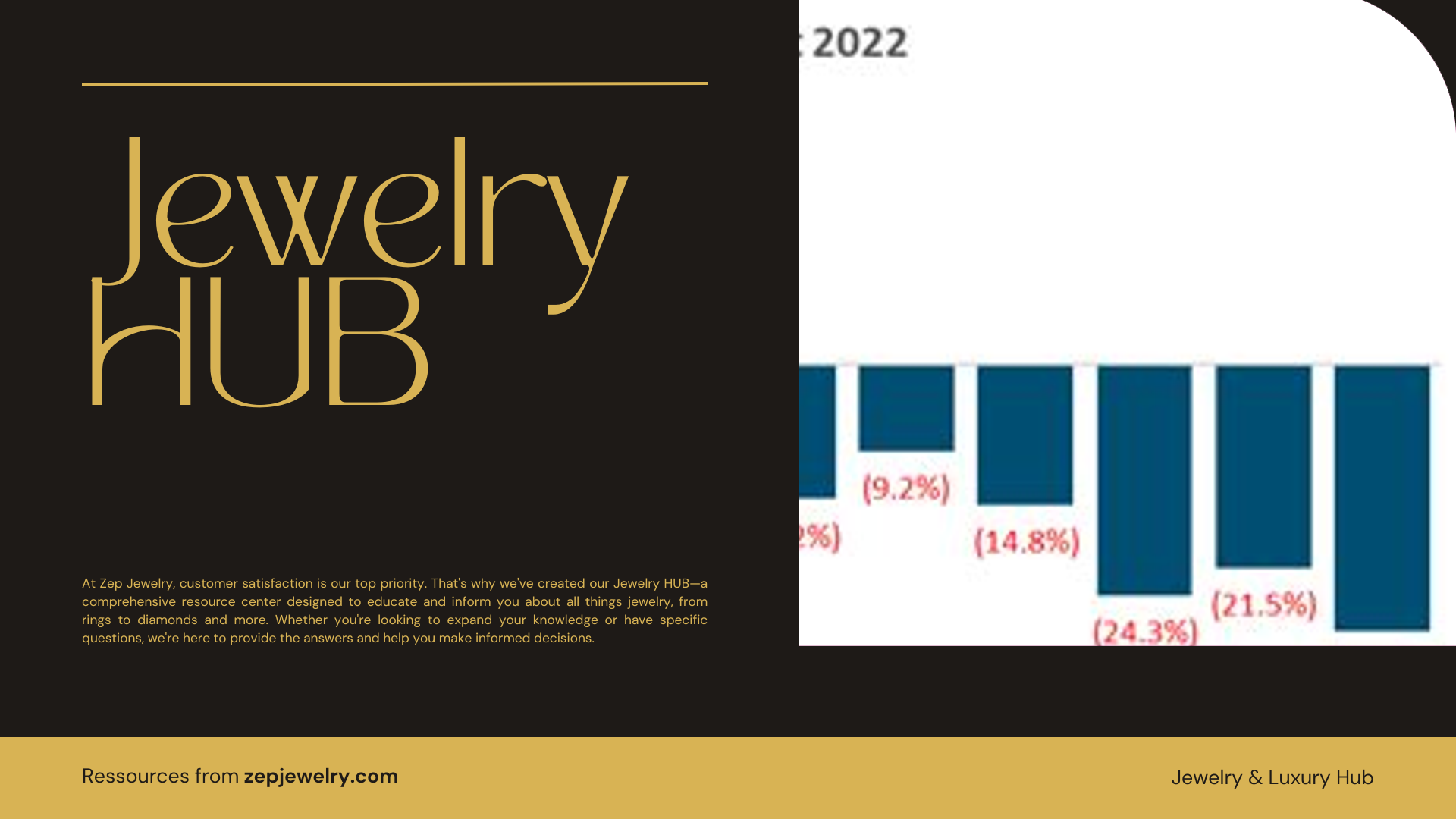Is the once sparkling world of jewelry losing its luster? Recent statistics suggest a sobering reality: sales among U.S. specialty jewelers have plummeted by 8.6%, with the natural diamond market taking an even sharper hit of 21.7%. As we peel back the layers, we uncover a tapestry woven with shifting consumer preferences, economic pressures, and fierce competition. Join us as we dive into this glittering yet troubled landscape, exploring the heart of the matter and revealing what has brought this industry to its knees.
Are jewelry sales actually down, and if so, by how much?
Are jewelry sales actually down, and if so, by how much?
Yes, jewelry sales have indeed experienced a downturn. Overall sales by US specialty jewelers have fallen by 8.6%. This decline is particularly pronounced in the segment of loose natural diamonds, which saw a staggering drop of 21.7% compared to February 2022. In addition to these figures, the jewelry market has faced persistent challenges, with units sold in the jewelry sector declining by 3.5% year-over-year as of June 2024.
This pattern of reduced sales can largely be attributed to a gradual decrease in consumer demand for diamonds, following a period of record-high sales during 2021 and 2022. The data indicates that consumers are adopting a more cautious approach, often opting to spend more on fewer items rather than indulging in multiple purchases. This shift was evident during the 2023 holiday season, where the average spending per item saw an increase of 1.6% compared to the previous year, even as the total number of items sold was on the decline.
Moreover, factors such as economic uncertainties, changes in consumer behavior, and demographic shifts are reshaping the landscape of the jewelry industry. Retail jewelers are now finding themselves under pressure to adapt and innovate in response to these evolving market trends. As the industry continues to face headwinds, the spotlight is increasingly on how retailers can effectively appeal to a younger audience while navigating these challenging conditions.
What factors are contributing to the decline in jewelry sales?
The decline in jewelry sales can be attributed to a complex interplay of various factors, notably decreased consumer demand, prevailing economic concerns, and shifting purchasing behaviors.
One primary driver for this downturn is the noticeable change in consumer sentiment; many shoppers are becoming more selective with their purchases. Instead of buying multiple pieces, they are prioritizing high-quality items, leading to a trend where consumers now typically spend more on fewer, more luxurious goods. This was particularly evident during the 2023 holiday season, which saw an increase of 1.6% in average spending per jewelry item compared to the previous year. This shift suggests that consumers are re-evaluating their spending habits, perhaps driven by a desire for lasting value rather than immediate gratification.
Additionally, economic factors such as inflation and market volatility have contributed to a cautious approach towards discretionary spending. Shoppers are weighing the practicality of their purchases against their financial stability, which is influencing spending patterns across various retail sectors, including jewelry. Notably, the allure of natural diamonds has waned, as evidenced by a significant 21.7% decline in loose diamond sales relative to the previous year.
Moreover, the jewelry industry is facing an aging demographic among shop owners, as many are nearing retirement. This generational shift impacts how businesses operate and adapt to modern consumer preferences. With a decline in the number of retailers—down by 2.8% to 17,554—many jewelers are struggling to connect with younger audiences who may not share the same enthusiasm for traditional jewelry purchases.
As the market evolves, retailers are increasingly challenged to align their offerings with shifting consumer values, emphasizing the importance of providing a unique shopping experience and high-quality craftsmanship that attracts discerning buyers. This trend towards “less for more” ultimately reshapes the landscape of jewelry retail, requiring innovation and adaptability from jewelers to stay relevant in a competitive market.
How do market trends influence the types of jewelry consumers are buying?
Market trends suggest significant consumer interest in specific jewelry categories despite general declines. For instance, tennis bracelets saw a remarkable revenue increase of 32%, highlighting how certain items can thrive in a challenging market. Furthermore, items priced between $20,000 to $50,000 have demonstrated double-digit sales growth, indicating that while overall sales may be down, some segments are still appealing to luxury consumers.
What is the future outlook for jewelry sales in the U.S.?
While the jewelry market has been experiencing notable declines, projections indicate a modest annual growth rate of 1.43% from 2024 to 2029. This growth potential arises from shifts in consumer behavior and the adaptation of retailers to the evolving landscape, which includes catering to the preferences of younger generations and enhancing online shopping experiences.
How has the pandemic affected consumer behavior regarding jewelry purchases?
The COVID-19 pandemic has had a profound impact on consumer behaviors, leading to a slowdown in foot traffic to jewelry stores and accelerated store closures. These trends may have lasting implications, as consumers adjust their purchasing habits to emphasize online shopping and new criteria for luxury and necessity, shaping the future of the jewelry retail landscape.
What challenges are independent jewelers facing in today’s market?
Independent jewelers confront numerous challenges, including an aging workforce, difficulties in succession planning, and increased pressures from luxury brand competition. Many jewelers are grappling with a lack of interest from younger generations in pursuing ownership, which leaves the industry with fewer leaders ready to navigate modern retail dynamics. Effective succession planning and financial investment are critical for the survival of these independent stores.
